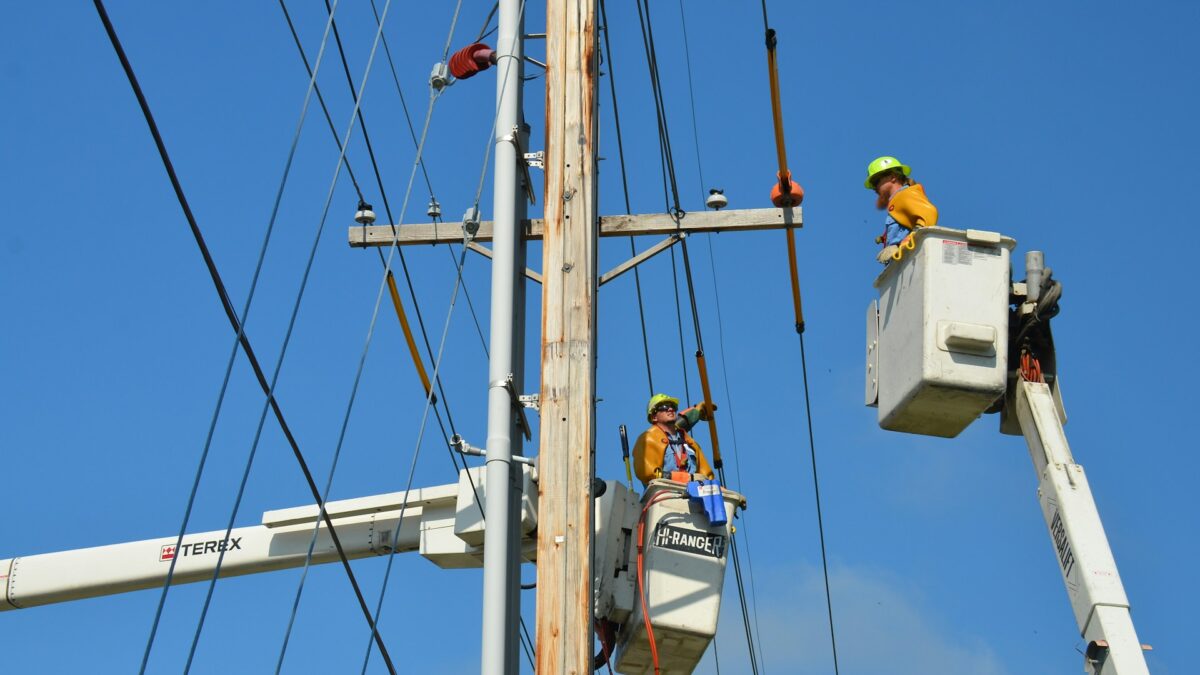
Last week a North Carolina district canceled school for March 8 because so many public employees were joining a feminist protest they didn’t have enough staff to even just babysit their students.
“While Chapel Hill-Carroboro City Schools values and supports its female employees, the decision to close schools is not a political statement,” interim Superintenent Jim Causby wrote to parents. “It is entirely about the safety of students and the district’s inability to operate with a high number of staff absences.”
The story really picked up traction, as they often do, after it hit close to DC: Monday, Alexandria public schools announced it was doing the same, “and apologized to families that now must find childcare options.” More than 300 Alexandria school employees filed leave for Wednesday. Chapel Hill-Carrboro spokesman Jeffrey Nash told me his district expected about 400 employees to be missing Wednesday after principals estimated absences.
Atop this, a blog and Twitter handle claiming to be run by a group of New York City teens are promoting another way to protest: “A Classroom Without Girls.” These apparent young ladies are encouraging girls to follow their example: “go to school that day, but will not participate. We will not raise our hands or answer questions in class. We will be ‘seen, but not heard.'” My feminist problematic buzzer just went nuts. I know, it’s always doing that, but this time the alarms are extra-loud. Let’s talk about a few things that are weird about these situations.
1. The Schools Have Enough Employees to Stay Open
Now, Alexandria has 2,260 full-time employees, making an approximately 13 percent absence rate Wednesday. It seems reasonable that schools could function for one day at 87 percent of employees working. In other words, there are grounds to question whether Alexandria really did need to send the parents of their 14,000 students scrambling for childcare two days out.
Yet Nash noted that on normal days the average absentee rate is 5 percent, so that brings Alexandria’s number closer to 80 percent of staff still showing up, an absence rate similar to Chapel Hill’s expected absence number divided by its 2,006 employees. Chapel Hill schools have similar student enrollment (although taxpayers there apend $10,000 per student per year versus $18,000 in Alexandria).
There are more grounds to question, however, if you look at teacher-student ratios in both districts: Chapel Hill has 1 teacher for every 13 students, Alexandria has 1 teacher for every 12. Like most U.S. public schools, both employ approximately one non-teaching person for every teacher. So even with everyone missing the staff to student ratio in Alexandria would be 1:7 and in Chapel Hill 1:7.5. Assuming the same proportion of teachers will be missing as other staff (Nash says lots of bus drivers will be out, so it seems a fair assumption), the teacher-student ratios with everyone missing come out to 1:16 in Chapel Hill and 1:14 in Alexandria — i.e., very little difference compared to non-strike days.
Now, I grant you can’t just in a few days redistribute bus driver absences over all the other routes, or every teacher’s class over all the remaining teachers. My point here is that, even if it made sense to close schools as they are configured now, they seem to have more than enough employees to function with a 20 percent haircut. Not only does this undercut the women’s strike argument that we can’t function without their tribe, angry local taxpayers may take that into consideration the next time a schools tax hike shows up on their ballots. Self-serving demonstrations like this make that outcome more likely.
2. Why Aren’t Other Districts Closing?
There appear so far to be no other whole-system school closures for strike day, even though not only are three-quarters of K-12 teachers female, they typically lean Left, making them double-crossed in the likely strikers’ Venn diagram. So while these two districts’ closures are making national news, perhaps the dog that didn’t bark is more newsworthy. Don’t expect to hear much about elsewhere, though.
The Huffington Post has to count all the Alexandria schools singly along with a New York preschool and college to get its breathless “dozens” of schools shutting down for the strike. Uh-huh. This nation has 13,000 school districts and nearly 100,000 K-12 public schools. A measly two district closures is really — pardon the pun — striking.
Are the schools in your communities participating in #DayWithoutAWoman? Tell us how! #IStrikeForhttps://t.co/Hnkks9ga33
— Women's March (@womensmarch) March 6, 2017
3. Striking Harms Innocent Bystanders
Teachers strikes have always been politically touchy because, well, besides the mundane inconveniences for family routines, striking does hurt kids. Missing class or having a substitute even for one day measurably hurts student learning. So not just the closed districts but in all classrooms where teachers are on strike Wednesday, it’s hurting kids. Is that really a good way to win at politics? I guess it makes education politics more transparent (everyone is not in it for the kids), but still, awkward.
In just one study about this, “Columbia researchers Mariesa Herrmann and Jonah Rockoff concluded that the effect on learning of using a substitute for even a day is greater than the effect of replacing an average teacher with a terrible one.” Further, public-school teachers are already typically more frequently absent than private-sector workers, even though they get much more vacation time, not including summer vacation. In fact, Alexandria schools were closed Friday for a teacher work day, stretching parents even more thin this week. Skipping more is not a good look for public education in a time when unions insist it is under attack.
Before applauding school closures on a #daywithoutawoman remember, a woman is now taking care of her kids who are not in school learning.
— Ally (@AllyBFraz) March 4, 2017
These teachers are taking a more responsible approach:
I'll be wearing red in solidarity! I work at a public school, mainly with students on the autism spectrum ❤ #WhyIResist #DayWithoutAWoman https://t.co/ZYe3YQsGsc
— khaleesi spice✨✨ (@ladykhaleesi23) March 2, 2017
https://twitter.com/Buns1978/status/836650604554403840
4. Taxpayers Pay Extra for Teacher Absences
The vast majority of K-12 teachers are public employees. So when they take an unnecessary day off to make a political point, they are forced their employers — the public — to subsidize political speech we all do not agree with. This is a violation of the public trust placed in teachers, and it erodes confidence in them and their institutions. See no. 3 for why this is probably harmful to their self-interest.
This is not just because teachers are public employees, but because when they are gone districts have to call in substitutes, who must also be paid atop the missing teacher’s salary. Costs and quantity of teacher absences seem to be rising, according to recent research: “School districts spent nearly $335 million on substitute teachers during the 2012-2013 school year, with 115 districts reporting. In 2014-2015, with 118 districts reporting, they spent nearly $356 million, a 6 percent increase in three years.”
5. Entrenches First World Privilege
This woman puts things in perspective for us:
https://twitter.com/catmayer/status/838840104609267712
Every American girl and boy has access to a publicly funded school. That is something at least 70 million children in the world cannot say, and “Girls are far less likely to attend school than boys in many of the world’s poorest countries.” Strikers “for women’s rights” whose protests have little girls learning less are hypocrites who should truly check their privilege.
6. Entrenches Rich Privilege and Punishes the Marginalized
So #daywithoutawoman -Teachers ask for off. School closes. Kids at home. Women now at home watching kids. Oh. Ok. TOTALLY GET IT NOW. https://t.co/UVicMj2VB8
— Brielle Ann (@brielleann) March 6, 2017
When some women take off work to spend a day on themselves, many mothers of the children they’ve left behind will be forced to cover, especially among those who are less economically secure. This is therefore not a protest that encompasses women, but only those whose lives are comfortable enough that they won’t be missed it they kick off for a day, or those who are callous enough to leave the needs of people who rely on them unmet. As a commenter on an article about the closures noted:
I have mixed feelings about this protest because I understand that actions often have to be disruptive to be effective. However, and unfortunately, this ultimately looks like yet another time when a group of people with privilege — the privilege to take a day off without real financial consequence, without worrying about getting fired, without having to worry where their kids will be while they’re at work, or how they’ll get them to the place where they had a reliable breakfast and lunch and now don’t — so another time when a group of privileged people think they’re making a point or taking a stand but it is counterproductive and hurts the most vulnerable in the process.
7. Does Not Respect the Voice or Consent of Non-Strikers
While strikers are out congratulating themselves for all they’re doing for women by not doing anything, other women (and men) in their workplaces and homes will have to shoulder their own workloads plus those of the strikers. Forcing people to fulfill your responsibilities is not exactly a way to win their hearts. It’s more likely a way of amplifying resentment.
Even many women who agree with strikers’ political ideas think a strike is not the most effective way to make those goals materialize, as the quotes above show. Instead of allowing these women — and ones with even more divergent views — to have their say, strikers’ methods abort possibilities for negotiation so that all people have a voice in and chance to consent to the public policies governing us all.
8. Lopsided Employer Bargaining Power
Last week affiliates of the women’s strike coordinated an “immigrants’ strike,” after which dozens, if not hundreds, of people who refused to come into work on a work day were warned, then summarily fired. This is how it works in many private-sector jobs, because employees are not the only people with rights and needs. Employers are, too. They have the right to define what they will pay for what work will be done, how, and when.
Employees have the freedom to accept the terms offered, negotiate better ones, or refuse them. It’s an arrangement both parties enter for mutual benefit. When one side starts to think they’re not getting their money or labor’s worth, they should be free to take their offer elsewhere.
Private employers are less willing to let 20 percent of their workforce take a coordinated, unnecessary personal day that would shut down the entire business and disrupt operations for tens of thousands of customers who rely on their services daily. It is common for private employees to have to coordinate days off to keep the lights burning. Those who don’t support this common good (after all, no business means no job) are fired. That’s the kind of deal lots of working folks have, and we’re glad to have it, because it keeps food on the table and gas in the car.
So we often feel ripped off when people we taxpayers pay ignore rules we have to live by to ease the prpotests of a loud minority that has access to perks most people don’t get, like the ability to pop off a day of work, inconvenience tens of thousands of people who are paying for that work to be provided as scheduled, and still keep their jobs while also-publicly-paid PR people apologize.
9. Takes the Mask Off Public Education Partisanship
Our reg school day transformed into a full day of activism. Pre-K class is raising money and getting signatures! #DayWithoutAWoman. https://t.co/HYn0Rwmm3y
— s gargus (@shgargamelly) March 4, 2017
We taxpayers and parents are often told that public education is nonpartisan, apolitical, nothing to see here. But we can’t figure out why, if that’s the case, the education ratchet always seems to go Left. Kids will learn all about global warming in science class but hardly a thing about college-prep physics, chemistry, or engineering. Or:
If you’re a teacher, and want to engage with and teach students about A Day Without Women, according to the Women’s March on Washington, a group of teachers have created an amazing lesson plan and presentation to engage students in teaching them about A Day Without Women.
This is publicly funded partisan politicking. That used to be off-limits because both sides didn’t want the other doing it, so we called a truce. But the truce has long been a lie for public funding only for Leftist causes. This strike is yet another example of that reality, and therefore a reason to end the charade and let families direct their tax dollars to schools that fit their values.
10. What Does This Teach Girls About Being a Woman?
So we want women to have successful careers, but we’re not going to show up to teach them in schools. https://t.co/xJDBIRIMQJ
— Kelsey Bolar (Harkness) (@kelseybolar) March 6, 2017
We hear from the Left all the time about how little girls need to be given role models for career success. What kind of career trajectory will they have if their models show that the way to win is not with a kick-ass resume, but by whining, playing the victim, and special pleading? We do girls no favor by teaching them that fitting the social stereotype of shrinking-violet female is their path to success. Corporate is cutthroat. If we want our girls to win we should be teaching them to be the ones to show up on the job when other people won’t.
This is where the “Classroom Without Girls” comes in. It just plays to stereotype for girls to sit down and shut up while the boys and teacher run class. Counterproductive. As is this protest altogether.
11. Counterproductive Movement Branding and Financing
Shutting down public services is a great way to annoy the public. That’s counterproductive not just in public relations, but also in long-term effects that could reduce the ability of women’s strike types to do their thing in the future. Why? Because if you aggravate the people paying your salary enough, they will eventually decide to stop paying it. Biting the hand, and all that.
https://twitter.com/JustLittleOldL/status/837659937492905984









